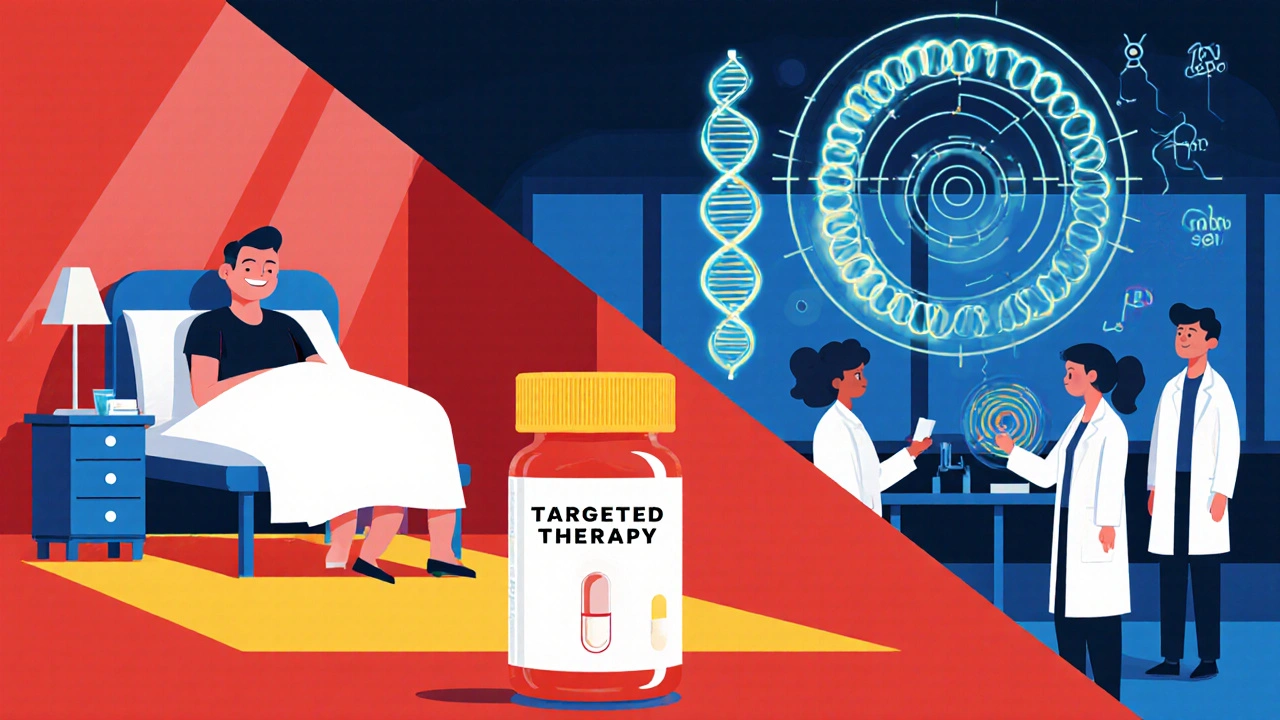Precision Medicine
When working with precision medicine, the practice of customizing healthcare based on individual genetic, environmental, and lifestyle factors. Also known as personalized medicine, it aims to match the right treatment to the right patient. Understanding this approach is becoming essential for anyone who wants care that fits their unique biology.
Genomics, the study of an organism’s complete set of DNA lies at the heart of modern precision medicine. By decoding a patient’s genetic blueprint, clinicians can predict drug response, identify disease risks, and select therapies that are most likely to work. For example, the HIV drug Atazanavir shows different lung‑related side effects depending on specific gene variants, a nuance highlighted in recent clinical guidance. This link between genetics and treatment illustrates how precision medicine encompasses genomics to improve outcomes.
Biomarkers, measurable indicators of biological processes, disease states, or treatment responses act as the compass that guides therapeutic choices. Whether it’s a blood‑based marker for diabetes progression or a tissue marker indicating lung fibrosis, biomarkers help clinicians decide when to start, adjust, or stop a medication. In practice, the presence of certain biomarkers can tip the scale in favor of Losartan for hypertension or steer doctors toward specific anticoagulation strategies for embolism, as recent imaging studies suggest. In short, precision medicine requires biomarkers to turn genetic data into actionable decisions.
Targeted therapy, treatments designed to interfere with specific molecules involved in disease brings the promise of fewer side effects and higher efficacy. By focusing on the molecular drivers of a condition, doctors can avoid the one‑size‑fits‑all approach. For instance, pirfenidone (Esbriet) targets pathways that drive idiopathic pulmonary fibrosis, offering a tailored alternative to broader immunosuppressants. This shows how targeted therapy influences treatment outcomes, fitting neatly into the precision medicine framework.
Across the articles in this collection, you’ll see precision medicine in action: from the nuanced drug‑interaction profile of Atazanavir on respiratory health, to the 2025 comparison of diabetes drugs like Onglyza that factor in patient‑specific metabolic markers. You’ll also find practical guidance on using CT scans to pinpoint embolisms, and tips for managing mood with paroxetine based on individual response patterns. Each piece demonstrates how clinicians blend genetics, biomarkers, and targeted therapies to craft care plans that truly fit the patient.
Diagnostic tools are the other side of the equation. Advanced imaging, such as CT angiography, pairs with genetic testing to create a comprehensive picture of disease. In embolism management, a high‑resolution CT can reveal clot location, while genetic data might suggest a propensity for clotting disorders. Similarly, iron‑folic acid supplementation for brain health is most effective when labs confirm specific deficiencies, tying lab‑based biomarkers to nutritional interventions.
Beyond labs and scans, lifestyle and environment shape precision medicine too. Factors like diet, sleep, and exposure to pollutants interact with a person’s genetic makeup, influencing drug metabolism and disease risk. For example, traveler’s diarrhea prevention strategies consider both gut microbiome variability and regional pathogen profiles, underscoring the need for a holistic view.
Why It Matters
Grasping precision medicine equips you to navigate the growing sea of individualized treatments, from HIV therapies to cancer adjuncts. Below, you’ll discover a curated set of articles that break down the science, compare drug options, and give you actionable steps to apply these concepts in real‑world scenarios. Dive in to see how genetics, biomarkers, and targeted therapy come together to shape the future of health care.
How Targeted Therapy is Changing Leukemia Treatment
Explore how targeted therapy transforms leukemia treatment, from key drug classes and real-world success stories to practical patient checklists and future advances.
Read more
